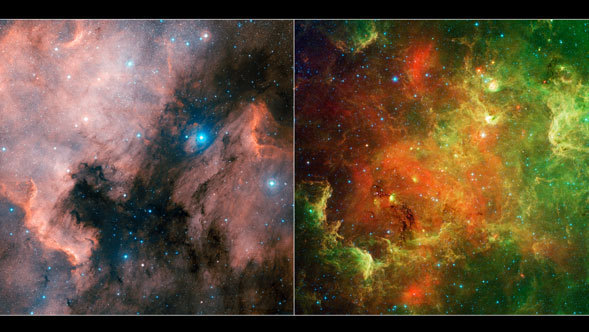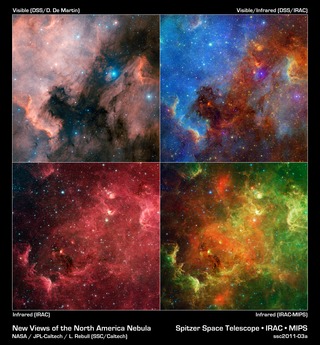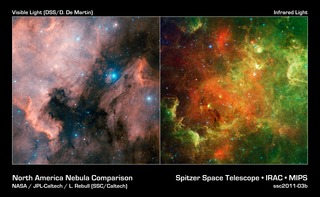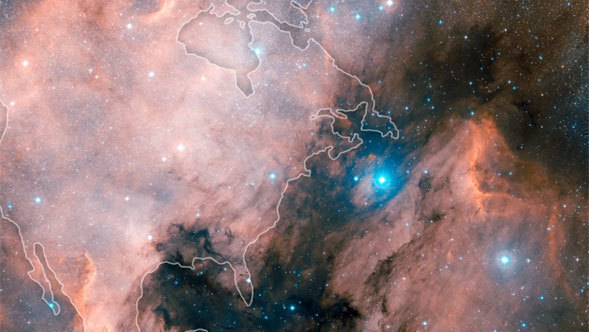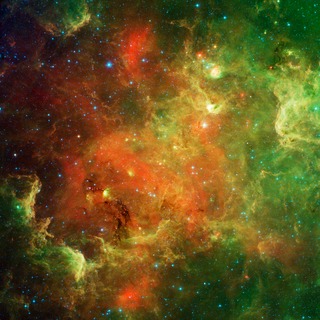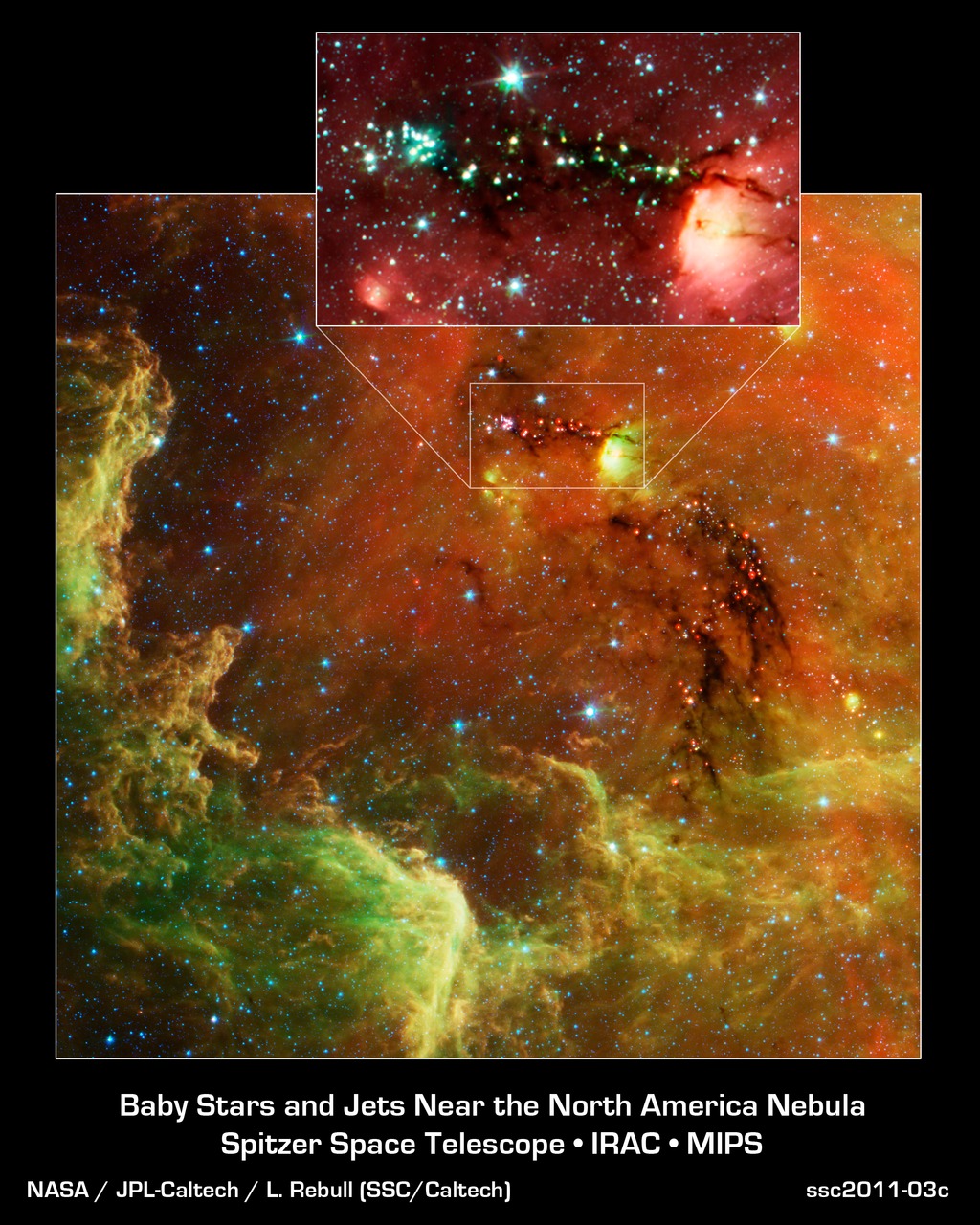
Credit: NASA/JPL-Caltech/L. Rebull (SSC/Caltech)
Observation • February 10th, 2011 • ssc2011-03c
ssc2011-03c
Stars at all stages of development, from dusty little tots to young adults, are on display in a new image from NASA's Spitzer Space Telescope.
The cosmic community is called the North America nebula. In visible light, the region resembles the North America continent, with the most striking resemblance being the Gulf of Mexico. But in Spitzer's infrared view, the continent disappears. Instead, a swirling landscape of dust and young stars comes into view.
This image focuses in on the Gulf of Mexico cluster of young stars. Several hundred young stars, seen here as the red dots, huddle together along their natal dark cloud -- what can be seen as the dark "river." In the main image, data from both the infrared array camera and multiband imaging photometer are included, showing infrared wavelengths of 3.6, 4.5, 5.8, 8, and 24 microns. In the inset, only data from the infrared array camera are shown, including wavelengths of 3.6, 4.5, 5.8, and 8 microns. The inset highlights jets from young stars, seen as green streaks near the stars.
About the Object
- Name
- North America Nebula • NGC 7000 • Pelican Nebula • IC 5070 • IC 5067
- Type
- Nebula > Type > Star Formation
- Nebula > Appearance > Emission
- Nebula > Appearance > Dark
- Star > Evolutionary Stage > Protostar
- Distance
- 2,000 Light Years
Color Mapping
| Band | Wavelength | Telescope |
| Infrared | 3.6 µm | Spitzer IRAC |
| Infrared | 4.5 µm | Spitzer IRAC |
| Infrared | 5.8 µm | Spitzer IRAC |
| Infrared | 8.0 µm | Spitzer IRAC |
| Infrared | 24.0 µm | Spitzer MIPS |
Astrometrics
- Position (J2000)
- RA =20h 55m 33.8s
- Dec = 44° 7' 50.9"
- Field of View
- 0.0 x 0.0 arcminutes
- Orientation
- North is 356.4° left of vertical
